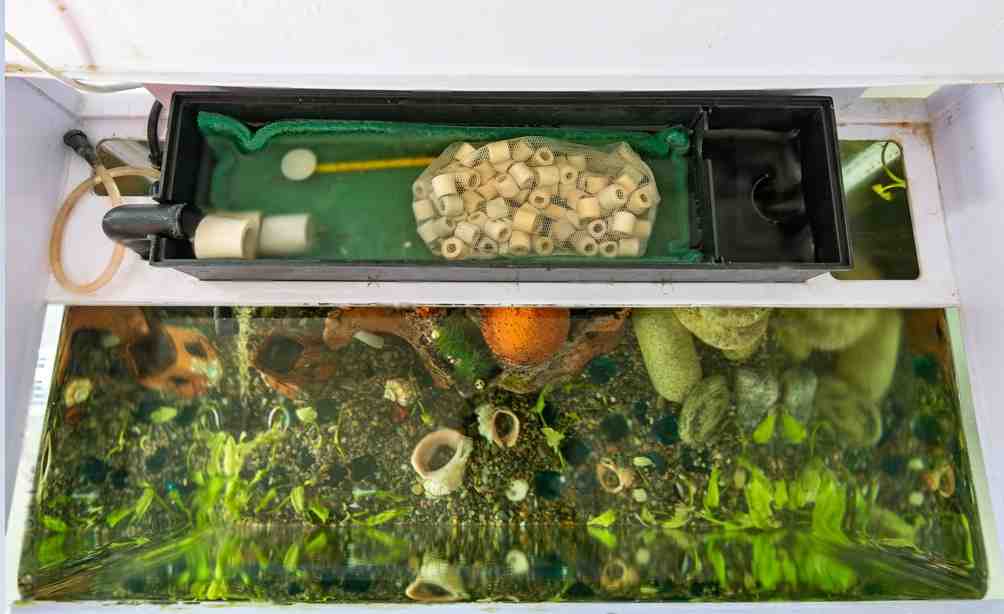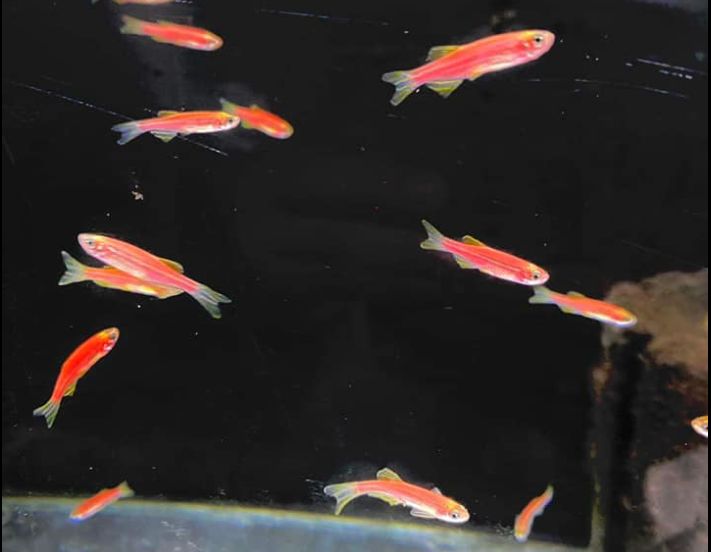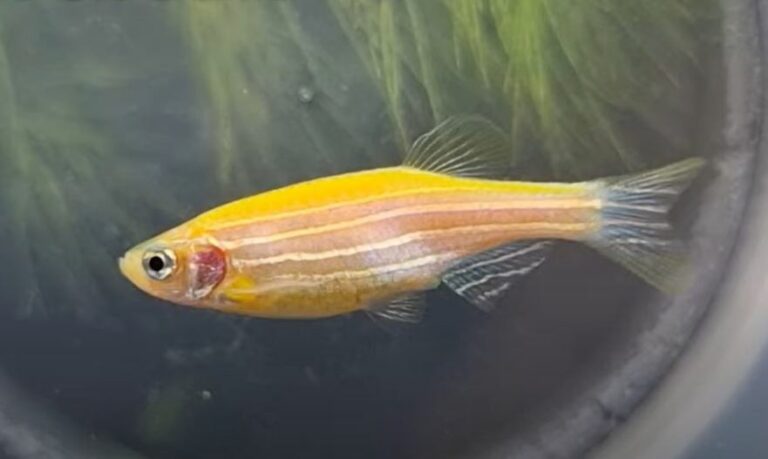Do Zebra Danios Need Filter System? The Critical Role of Filtration in Maintaining a Healthy Aquarium
Zebra Danios are one of the most popular freshwater fish for home aquariums due to their dazzling colors and energetic schooling behaviors. Their tiny size and remarkable vibrance make them particularly sensitive to water conditions. When preparing a new tank for these tropical beauties, setting up proper filtration is crucial.
Zebra Danios hail from slow-moving, heavily vegetated streams in South America. Replicating those clean, clear water conditions in captivity requires removing waste and maintaining stable water chemistry. A robust filtration system accomplishes both goals through mechanical, chemical, and biological filtration.
New aquarists often wonder do Zebra Danios need a filter. The answer is yes. As delicate tropical fish, Zebra Danios depend on filtration to thrive. Filters provide vital environmental stability, from removing debris and toxins to oxygenating the water. Investing in an appropriate filter suited to your tank size prevents illness and mortality down the road.

By understanding the immense benefits quality filtration provides Zebra Danios, you can select the right system for your unique setup. Clear, pristine water allows their colors to shine fully while supporting long-term health. Don’t cut corners on filtration when keeping these sensitive, stunning fish. Their well-being depends on it!
Table of Contents
- The Benefits of Aquarium Filtration for Zebra Danios
- The Critical Role of Tank Size When Keeping Zebra Danios Without Filtration
- Determining Safe Zebra Danios Stocking Levels for Filterless Aquariums
- Creating a Suitable Home for Zebra Danios Without Using a Filter
- Benefits of Adding an Air Pump to a Filterless Zebra Danios Aquarium
- Conclusion
The Benefits of Aquarium Filtration for Zebra Danios
Zebra Danios are strikingly colored, active fish that thrive in pristine water conditions. Do they require an aquarium filter, or can they manage without? While keeping Zebra Danios filter-free is possible, providing filtration dramatically benefits their health and longevity.
Filtration serves several vital functions. Mechanical filtration traps debris and waste particles before they foul the water. Chemical media removes heavy metals, odors, and discoloration. Bio-filtration converts ammonia into less toxic compounds via beneficial bacteria. This maintains the clear, stable water Zebra Danios depend on.
Going filterless puts a heavier burden on the aquarist through relentless monitoring, massive water changes, and precise stocking limits. Without that filtration safety net, any lapse risks Zebra Danios’ illness and death. A sponge filter or small hang-on-back model tailored to the tank size gives Zebra Danios a cleaner, healthier home.
Can Zebra Danios survive without a filter? Yes, but it will severely compromise their quality of life and coloration. Investing in appropriate filtration ensures good water quality with less work while allowing your school of Zebra Danios to thrive and sparkle.
The Critical Role of Tank Size When Keeping Zebra Danios Without Filtration
Size matters when taking on the challenge of a filterless Zebra Danios tank. A larger water volume makes maintaining suitable water quality much more feasible to process waste and toxins without filtration. Aim for at least a 20-gallon tank, though even bigger is better.
In a larger aquarium, the effects of fish waste, leftover food, and plant decay are diluted since there is more water per fish. A 20-gallon housing just 8-10 Zebra Danios distributes pollutants much more broadly than a 10-gallon tank. This gives you a larger safety margin before toxic thresholds are reached.
Bigger tanks also promote stability during routine maintenance, like water changes. Removing 15% of the water from a 5-gallon tank causes massive parameter shifts. But changing 15% of a 20-gallon has a much less dramatic impact on conditions.
Don’t skimp on tank size if going filterless. Zebra Danios need ample space to swim and school too. Upgrade to the largest tank possible for your space and budget. This makes your work much easier and provides a healthier, more stable environment for Zebra Danios to dazzle without filtration.
www.tinyfishtank.com
A Fully Tank Cycle
Perhaps the most vital preparatory step when establishing a new filterless Zebra Danios aquarium is patience. Take the time upfront to properly cycle the tank before adding any fish. This allows beneficial bacteria to accumulate to control waste.
To cycle, add a fish food source daily as if feeding stocked fish. Test levels of ammonia and nitrites frequently. Once both read zero for several days, the tank cycled. This process can take 3-5 weeks as bacteria colonies establish and begin processing nutrients.
Avoid the temptation to speed up cycling by adding hardy fish first. Ammonia and nitrite spikes during this period are highly hazardous to Zebra Danios. Only add them once the tank tests completely cycled and non-toxic. They are too sensitive for exposure during the cycling process.
If their home isn’t ready, rushing into buying Zebra Danios can have tragic results. Let the tank fully mature first for the best chance of success, filter-free. Patience pays off by giving your Zebra Danios a safe, healthy start to thrive in their new home.
Deep Sand Substrate in a Filterless Zebra Danios Aquarium
In a filterless Zebra Danios aquarium, the tank bottom substrate layer plays an expanded role in maintaining water quality. Opting for 3-4 inches of fine sand looks natural and provides surface area for helpful bacteria.

Without filtration, substrates like pool filter sand become the primary site for the nitrogen cycle. Beneficial bacteria accumulate and spread across sand grains, continuously processing fish waste. The increased volume of the substrate allows larger bacteria populations to establish.
Pool filter sand also won’t compress over time like gravel, retaining its depth for gas exchange and stirring the sand weekly releases trapped organics and wastes for bacteria access.
For planted setups, nutrient-rich substrate capped by an inch of sand optimizes plant growth while offering bacteria space. No filtration means relying more on biological processes within the substrate rather than external equipment. Invest in a deep, fine sand bed for healthier water quality.
Role of Live Aquarium Plants in Filterless Zebra Danios Tanks
Without the waste-processing benefits of filtration, dense plantings become critical in filterless Zebra Danios aquariums. Fast-growing stem plants, floating plants, moss, and nutrient-hungry root feeders all contribute to improved water conditions.
Plants compete with algae for nutrients like nitrogen, absorbing dissolved wastes before accumulating. They also release oxygen into the water through photosynthesis while helping stabilize pH, and the more vigorous the plant growth, the more aquarium benefits.
Aim for at least 50% plant cover in a filterless tank. Favor fast growers like hornwort, anacharis, and floating plants that can be thinned and replanted as needed. Natural beauty is a bonus!
With a filterless system, there is no mechanical trapping of debris and limited bacteria sites beyond the substrate. Lean heavily on live plants as the true heroes to absorb and metabolize dissolved organics. They provide natural filtration to keep water clean and parameters stable for sensitive Zebra Danios.
Frequent Partial Water Changes: A Must for Maintaining Healthy Water in Filterless Tanks
While water changes are essential in any aquarium, they become critical for maintaining suitable water quality in a filterless Zebra Danios tank. Without filtration continuously removing dissolved wastes, regular water renewal is essential.

Aim to replace at least 15-25% of the tank water weekly. Use a gravel vacuum to remove debris from the substrate during changes. Test the impact of ammonia, nitrite, and nitrate levels before and after changing water.
Additional water changes may be needed if tests show toxin accumulation between weekly renewals. Zebra Danios are very sensitive to poor water quality. Don’t let nitrogen compounds build up.
The absence of filtration puts a heavier burden on the aquarist to manually dilute dissolved wastes and replenish trace elements through large, frequent water changes. But this is the only way to provide clean, non-toxic water conditions without a filter. Stay diligent with testing and changes.
Determining Safe Zebra Danios Stocking Levels for Filterless Aquariums
Stocking limits become even more critical in filterless Zebra Danios aquariums. Without filtration to process fish waste, overloading the tank with too many Zebra Danios risks dangerous ammonia and nitrite spikes. Take a conservative approach to stock.
Follow the standard rule of allowing 1 inch of total fish length per 1 gallon of water. So for a 10-gallon tank, house no more than 10 inches of Zebra Danios, which equals 8-10 individuals depending on size. Remember to factor in substrate and decor displacements too.
Resist the temptation to overstock without a filter. Excess fish and their waste can rapidly deteriorate water quality, and Zebra Danios are extremely sensitive. An overcrowded tank often results in sickness, aggression from territorial disputes, and deaths.
While their small size permits adding more, Zebra Danios still produces waste. Without filtration, even a few extras can push conditions over the edge. Stick to conservative stocking levels and test water frequently. This prevents devastation down the road due to an overloaded filterless tank.
Creating a Suitable Home for Zebra Danios Without Using a Filter
While filtration is highly recommended for Zebra Danios, keeping them in a filterless tank with careful setup modifications and maintenance is possible. This requires strict stocking limits, large water volume, live plants, and rigorous testing.
A filterless Zebra Danios tank should be at least 20 gallons or more. This dilutes waste and allows more stable parameters. Include fast-growing stem plants like hornwort to absorb ammonia and provide shade. Limit fish to 1 inch per 2 gallons; for 20 gallons, house just 10 Zebra Danios maximum.
Test water chemistry twice weekly, closely watching ammonia, nitrites, and nitrate levels. Perform at least a 50% water change at the first sign of accumulation. Remove decaying plant matter and uneaten food immediately to avoid spikes in toxins.
While a major challenge, devoted aquarists can maintain suitable water quality for Zebra Danios without a filter through this combination of light stocking, live plants, close testing, and large, frequent water changes. But filtration eases the burden substantially while supporting a healthier, more vibrant Zebra Danios colony.
Benefits of Adding an Air Pump to a Filterless Zebra Danios Aquarium
While an air pump is no substitute for actual filtration, incorporating one into a filterless Zebra Danios tank setup can provide some advantages. The bubbles’ water movement and surface agitation help improve oxygenation and gas exchange.

The constant water circulation driven by the rising bubbles also evenly distributes heat, nutrients, and wastes. Without filter outflow, areas of the tank can become stagnant, allowing debris to accumulate and parameters to fluctuate locally. Air bubbles help prevent this.
Increased surface disturbance facilitates crucial gas exchange with the air, expelling waste carbon dioxide from the water while infusing it with oxygen. This is important in the absence of the water agitation filters provided.
Of course, an air pump will do nothing to remove solid wastes or control nitrogen compounds like a filter. But supporting oxygenation and circulation are still valuable in a filterless tank. For Zebra Danios, optimized oxygen levels are key to their health. Just don’t depend solely on bubbles for clean water!
Conclusion
While filtration makes maintaining suitable water conditions much easier, keeping Zebra Danios healthy and vibrant without it is possible. This requires meticulous tank setup, conservative stocking, and diligent maintenance to compensate for the lack of mechanical, chemical, and biological filtration.
A sufficiently large tank volume, matured nitrogen cycle, thick sand substrate, and dense plantings establish an ecosystem where wastes can be processed naturally. Changing water frequently removes excess nutrients before they accumulate. Testing often is essential to stay ahead of rising toxins.
Maintaining clean water without a filter’s waste-capturing capabilities takes greater effort and responsibility. But the beauty of Zebra Danios and a lushly planted oasis make the commitment worthwhile for devoted aquarists. Give your sensitive Zebra Danios the best chance by starting with ideal conditions, stocking lightly, and staying on top of tank maintenance. Your reward will be a slice of a thriving Amazonian habitat in your home.




![How Many Zebra Danios Should You Keep Together? [3 Expert Advice]](https://www.tinyfishtank.com/wp-content/uploads/2023/08/How-Many-Zebra-Danios-Should-You-Keep-Together-768x469.jpg)
![Do Zebra Danios Need Oxygen and Air Pump? [3 Hidden Facts]](https://www.tinyfishtank.com/wp-content/uploads/2023/08/Danios-Need-Oxygen-768x479.jpg)

